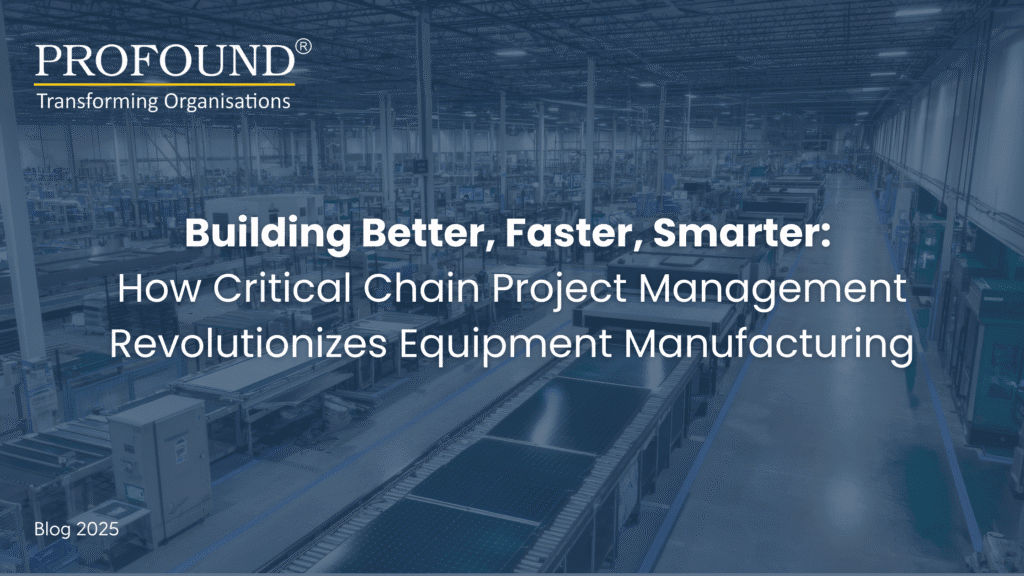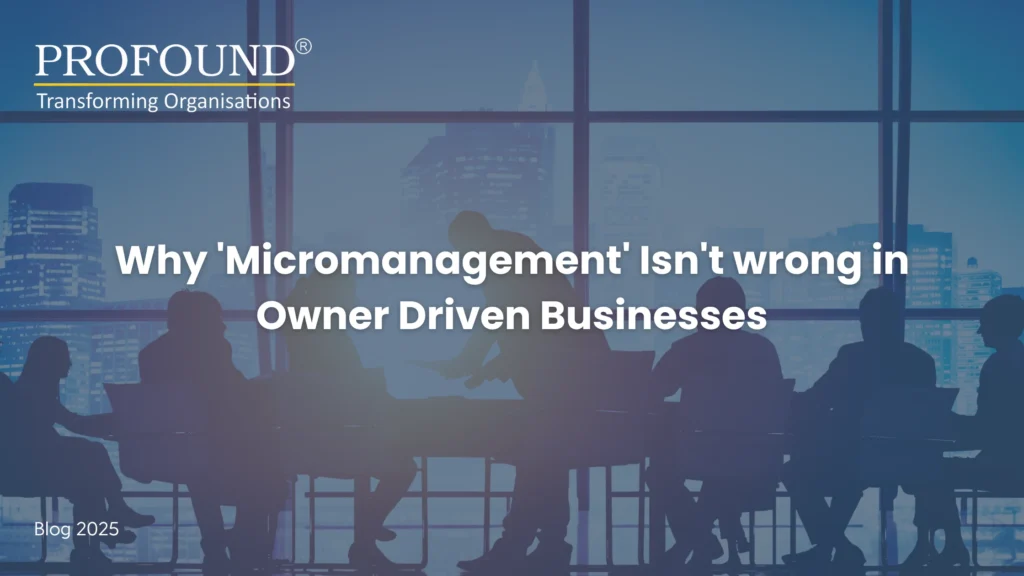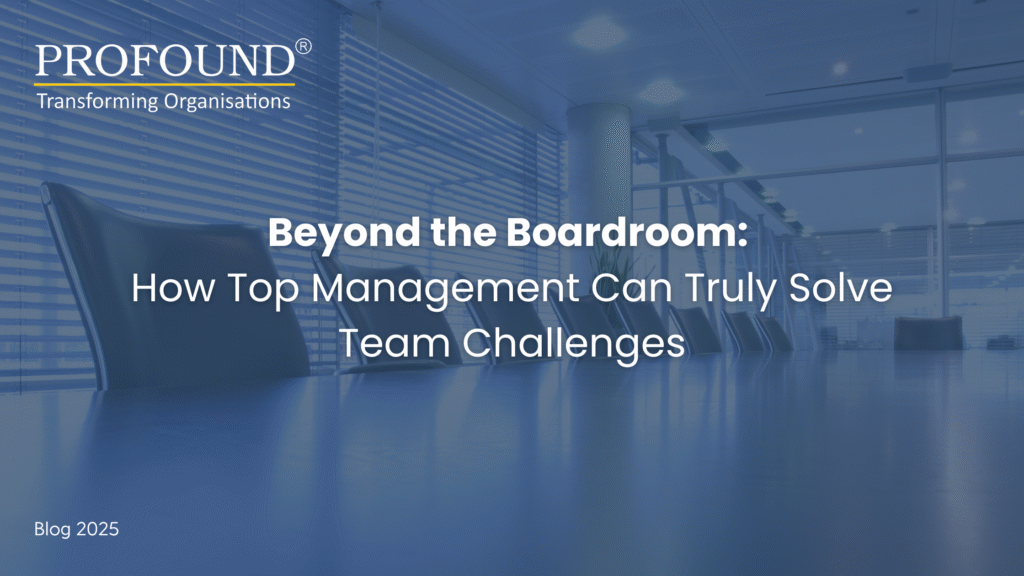
In the dynamic world of machine and equipment manufacturing, delivering innovative, high-quality products on time and within budget is paramount. But anyone who’s navigated the complexities of engineering, procurement, assembly, and testing knows that projects can easily derail. Enter Critical Chain Project Management (CCPM), a methodology designed to tackle the inherent uncertainties and behavioral pitfalls that plague traditional project management.
In my view by integrating CCPM principles, equipment manufacturers can transform their project delivery, reduce lead times, and significantly boost profitability. Profound Consulting has been implementing the critical methodologies in their machine manufacturing consulting or equipment manufacturing consulting projects. Let’s explore how.
1. Strategic Project Selection & Prioritization: The Foundation of Success
Before a single bolt is turned, strategic project selection is crucial. In CCPM, this isn’t just about market demand; it’s about evaluating projects based on their contribution to the overall organizational goal – often maximizing throughput. Throughput / Time & Throughput / Expenses is a key ratio to be looked here.
- Rule: Prioritize projects that align with the “drum” of the organization, i.e., the most constrained resource or process. This ensures that every project contributes to the system’s ability to deliver.
2. Choking the System: Less is More
One of the biggest mistakes in manufacturing project management is overloading the system with too many projects. This leads to resource contention, delays, and a significant increase in lead times.
- Rule: Implement “choking” – carefully controlling the number of projects released into the system. This prevents “bad multitasking” and ensures that resources can focus on completing tasks efficiently. Think of it like a highway: too many cars, and everyone slows down. Caveat: choking has to be simultaneously be followed by speeding up the work being released into the system.
3. Full Kit Release: Preventing Stalls
Imagine starting to design a complex machine & you find few critical inputs missing from customer or during assembling a complex machine, only to find a critical component is missing. This is a common scenario that leads to rework, frustration, and wasted time.
- Rule: A project should only be “released” when it’s a “full kit” – meaning all necessary information, resources, and materials are available and ready to go. This prevents projects from stalling and ensures a smooth workflow.
I recommend involving your customers early in the phase to ensure the key inputs & information is received well in advance to avoid pitfalls.
4. Project Planning: Buffers for Uncertainty
Traditional project management often pads individual task estimates, creating hidden safety time that rarely gets used efficiently. CCPM takes a different approach.
- Rule: Individual task estimates are aggressive yet realistic, focusing solely on the work itself. Instead, system-level “buffers” are strategically placed:
- Project Buffer: At the end of the entire project to protect the delivery date.
- Feeding Buffers: At points where a non-critical chain path feeds into the critical chain, protecting the critical path from delays on feeder tasks.
- Resource Buffer: To ensure critical resources are available when needed.
5. Execution: Focus and Flow
Once a project is released, the focus shifts to execution, emphasizing flow and eliminating “bad multitasking.”
- Rule: Encourage “relay race” behavior among teams. As soon as a task is finished, the output is immediately handed off to the next resource. Teams are incentivized to complete tasks quickly and pass them on, rather than starting new work prematurely.
- Rule: No Bad Multitasking: Resources should focus on one task at a time until completion, resisting the urge to jump between unfinished tasks. This dramatically reduces individual task completion times.
Here management should encourage & support this by avoiding loading their teams beyond capacity & sustain this practice for a long term benefit.
6. Project Review, Monitoring & Control: Managing Buffers, Not Tasks
Traditional project reviews often get bogged down in individual task status updates. CCPM simplifies this by focusing on Project Completion & Buffer consumption.
- Rule: Monitor the completion & buffer consumption rate of the project and feeding buffers. If buffers are being consumed too quickly, it’s an early warning sign that the project is at risk, prompting proactive intervention.
- Rule: Use “fever charts” or similar visual tools to track buffer status, making it easy for management to see the health of all ongoing projects at a glance.
The Payoff
By embracing Critical Chain Project Management, machine and equipment manufacturers can achieve:
- Shorter Lead Times: Less bad multitasking and better flow mean projects finish faster.
- Improved On-Time Delivery: Strategic buffers protect project completion dates.
- Higher Throughput: Efficient resource utilization allows more projects to be completed.
- Increased Predictability: A clearer understanding of project status and risks.
- Reduced Stress: Teams focus on one thing at a time, leading to less context switching and frustration.
In an industry where precision and timely delivery are non-negotiable, CCPM offers a robust framework for building not just machines & equipments, but also a more efficient, predictable, and profitable manufacturing operation.
Profound Consulting has been integrating machine manufacturing consulting with Supply Chain Consulting to radically elevate the speed & quality of execution coupled with increase in sales, throughput, bottom-line & cash flow of companies.
Are you ready to optimize your project flow and elevate your manufacturing game?Partner with Profound Consulting to implement Critical Chain Project Management and transform your machine and equipment manufacturing projects into a high-speed, high-performance growth engine.
Frequently Asked Questions
Q 1. What is machine manufacturing consulting?
Machine manufacturing consulting helps manufacturers streamline design, production, and delivery processes to improve efficiency, reduce costs, and boost profitability.
Q 2. How do industrial equipment manufacturing services add value?
Industrial equipment manufacturing services optimize engineering, procurement, and assembly, ensuring faster delivery, higher quality, and improved project outcomes.
Q 3. Why is manufacturing equipment consulting important?
Manufacturing equipment consulting identifies bottlenecks, aligns resources, and improves workflows, helping businesses achieve predictable growth and on-time project delivery.
Q 4. What is the role of machinery supply chain consulting?
Machinery supply chain consulting ensures timely availability of components and materials, reduces delays, and strengthens manufacturing efficiency.



